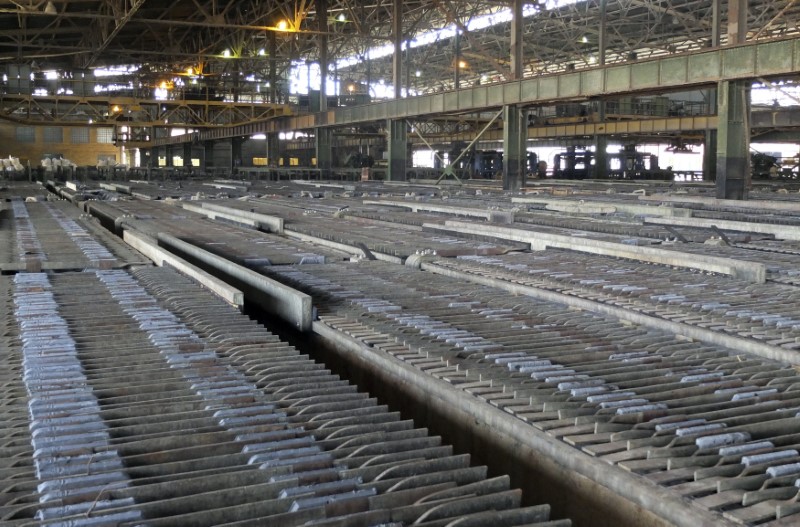By Pratima Desai
LONDON (Reuters) - The spotlight in the cobalt market has been fixed on electric vehicles but shrinking supply and robust demand from traditional sectors such as jet engine makers are helping fuel a price rally that shows no signs of fading.
Cobalt in recent years has become synonymous with electric vehicles as it is used in rechargeable lithium-ion batteries, already a major source of demand.
However, demand for cobalt metal used to make superalloys, valued for their resistance to high temperatures and corrosion, for products such as jet engines cannot not be ignored, particularly at a time of falling output.
Supply issues were reinforced in January when a cyclone disrupted output at the Ambatovy operation in Madagascar, helping fuel a rally which has taken prices of cobalt metal
Prices are up nearly 20 percent since January and more than four times the level seen in Dec. 2015 for cobalt, a byproduct of copper and nickel production.
CRU analyst George Heppel said the problem in the metal market had "been brewing" for some time.
"Demand growth for metallurgical applications like aerospace and prosthetics is healthy," Heppel said.
"The metal market will remain in deficit for many years, until we see more refining capacity. We've seen production cuts at several refineries."
CRU forecasts metal production at 35,500 tonnes this year, but expects 8,000 tonnes of that to be diverted to chemicals, leaving supply at 27,500 tonnes and a deficit of 5,000 tonnes.
Refineries shutdowns include Tocantins in Brazil, owned by Votorantim, while those producing less include Eurasian Resources Group's (ERG) Chambishi refinery in Zambia.
Sources say Chambishi will see a further decline this year after producing 2,500 tonnes last year and 4,600 tonnes in 2016.
ERG declined to comment.
Overall supply last year fell 3,000 tonnes or 8.7 percent, according to an estimate by Darton Commodities in its annual review of the cobalt market.
This year, consultants at Roskill see a small surplus followed by a deficit of 1,200 tonnes next year. They see cobalt metal production at 45,100 tonnes this year and cobalt chemicals at 70,400 tonnes.
"One problem is most new cobalt production is aimed at electric vehicles, where there are no shortages, yet," a source at one cobalt producer said.
Superalloys account for about half of cobalt metal demand. Manufacturers include firms such as Precision Castparts, bought by Berkshire Hathaway (NYSE:BRKa) in January 2016, Cannon Muskegon, and Allegheny Technologies (N:ATI).
Cobalt industry sources say shortages have been exacerbated by a lack of good quality superalloy scrap or revert.
"Typically, in one tonne of alloy, 50 percent would have been revert and 50 percent new metal. Now they are having to use more new metal because it's not being recycled quickly enough," a cobalt industry source said.
The alloys are used by jet engines makers Rolls Royce (L:RR), Pratt Whitney and CFM International, a joint venture between GE (N:GE) and Safran (PA:SAF), to power planes built by Airbus (PA:AIR) and Boeing (N:BA).
"On the orders front, 71 customers placed the 912 net orders(in 2017)," Boeing said on its website, "The total extends Boeing's backlog to a record 5,864 airplanes – at year end – which is equal to about seven years of production."

Airbus says its order book for 7,179 aircraft as of the end of April represents about nine years of production.